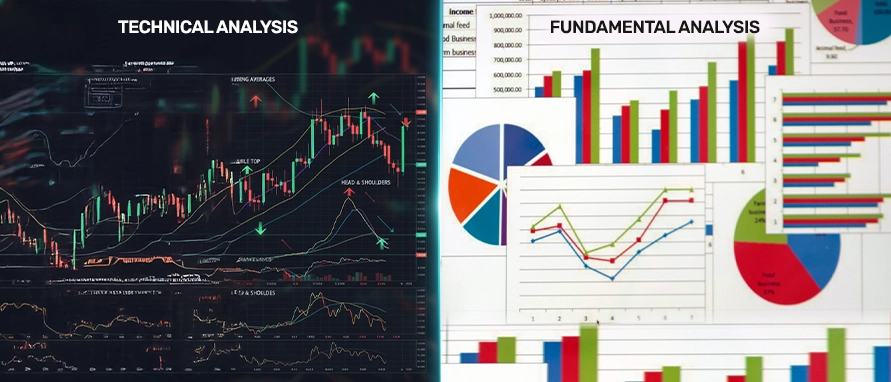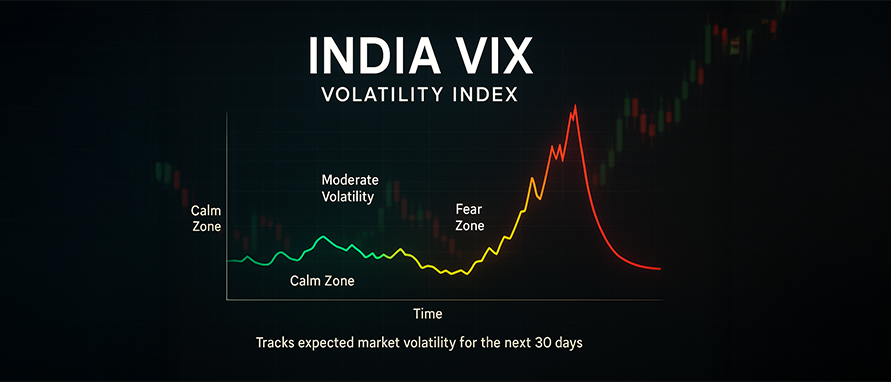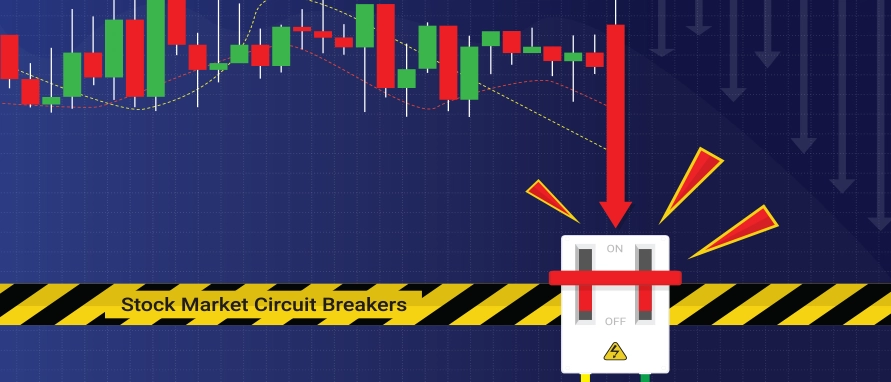-
Our ProductsLoansCardsInsuranceInvestmentsStock MarketElectronics MallCIBIL ScoreKnowledge CentreAcademyCalculators
- Our Services
- My Account
- Discover
Strategies to Identify Entry and Exit Points in the Stock Market
Introduction
Entry and exit points are price levels where investors choose to buy or sell stocks. Identifying these points can help manage risk and optimise potential outcomes. Learn the technical indicators, fundamental triggers, trade‑style suitability and risk management tools to build confidence.
Understanding Entry and Exit Points
Learn the fundamental definitions before delving into the strategies:
What is an entry point
This is the price level or condition at which an investor decides to purchase a stock. It is typically chosen based on analysis that suggests favourable price action or underlying fundamentals.
What is an exit point
This denotes the price or situation that prompts an investor to sell. Investors may exit to lock in gains, limit losses, or reallocate funds.
How to Identify Entry and Exit Points in the Stock Market
Technical analysis – Use chart patterns, support/resistance levels, and indicators like RSI or MACD to spot buying or selling opportunities.
Fundamental analysis – Analyze company financials, earnings, and valuations to assess when a stock is undervalued (entry) or overvalued (exit).
News and events – Track corporate news, economic data, and market sentiment for potential price-moving triggers.
Volume analysis – High trading volume can confirm strong entry or exit signals.
Trend analysis – Identify whether the stock is in an uptrend or downtrend to align trades with the broader market direction.
To help you navigate the upcoming methods, here is an overview: technical indicators rely on price and volume, while fundamental and sentiment signals leverage economic or company news.
Technical Analysis Tools
Technical tools study past price movements to forecast potential entry or exit levels:
Moving Averages and Crossover Signals
A moving average (MA) is calculated as the average closing price over a set number of days (for example, 50‑day or 200‑day).
A crossover happens when a faster MA crosses above or below a slower MA, signalling possible entry or exit points. For example:
Entry signal: 50‑day MA crossing above 200‑day MA (“golden cross”)
Exit signal: 50‑day MA crossing below 200‑day MA (“death cross”)
Relative Strength Index (RSI)
RSI measures momentum on a scale of 0–100.
RSI above 70 may indicate overbought stock
RSI below 30 may indicate oversold stock
Entry or exit actions are based on a reversal from extreme readings.
MACD (Moving Average Convergence Divergence)
MACD = 12‑period EMA – 26‑period EMA
Signal line = 9‑period EMA of MACD
Positive crossover may signal entry; negative crossover could suggest an exit.
Bollinger Bands
Bollinger Bands are set two standard deviations away from a 20-period moving average. When prices approach the upper band, it can indicate strong buying activity, while movement near the lower band may suggest weakening demand or potential undervaluation.
Fibonacci Retracement Levels
Fibonacci ratios (23.6%, 38.2%, 61.8%) are applied to recent price swings to identify pullback levels.
These often act as support or resistance where entries or exits may occur.
Candlestick and Chart Patterns
Patterns such as triangles, head and shoulders, or double tops/bottoms are formed by price action.
These patterns often anticipate reversals or continuation of trends.
Support, Resistance, Trend Lines, Pivot Points, ACD System
Connecting past lows or highs defines support and resistance lines. Prices often respond at these levels, making them helpful for entry or exit decisions.
Confirmation of Volumе
Volume adds strength to price signals. High volume during a breakout or breakdown confirms valid entry or exit points, while low volume may signal weak or false moves.
Fundamental and Sentiment Signals
Fundamental and sentiment cues help anticipate larger market moves:
Earnings Releases and Economic Indicators
Company reports on profits, revenue, guidance or key economic data releases, such as inflation or interest rate news can trigger significant stock movements.
Market Sentiment and Contrarian Signals
High bullish sentiment can become a contrarian signal to prepare for a decline, while excessive bearishness may indicate a potential low point to consider entry.
Which Approach Suits Your Style
Explore how different trading horizons align with these strategies:
Day Trading
Traders look for quick technical signals and focus on intraday support and resistance.
Fast indicators like MACD crossovers or RSI extremes help time short‑term entries and exits.
Swing Trading
Swing traders capture multi‑day or weekly moves, often using moving averages, trend lines and chart patterns.
Positional Investing
This is a longer‑term approach. Investors use economic triggers, earnings and broader chart levels like support/resistance or major moving averages.
Risk Management
Mitigating risk ensures trades do not escalate losses unexpectedly, while also securing profits:
Stop‑loss and Take‑profit Levels
Stop‑loss orders are placed below entry levels to limit losses, while take‑profit levels lock in gains.
For example, a 5 % stop‑loss level may be set just below a support zone.
Volume and Volatility Analysis (e.g. ATR)
Average True Range (ATR) calculates recent trading range volatility.
ATR helps determine reasonable stop‑loss distances to avoid premature exits due to normal fluctuations.
Five‑Step Trade Filter Decision Process
A risk‑control framework could include the following steps:
Define entry and exit
Determine stop‑loss and take‑profit
Ensure stop‑loss aligns with acceptable risk
Confirm trade setup with indicators
Review trade before execution
Conclusion
By combining technical analysis tools like MACD, Bollinger Bands, and chart patterns with fundamental insights such as earnings, valuations, and market news, investors can better time their entry and exit points. Additionally, practicing sound risk management—including setting stop loss levels and position sizing—helps protect capital and enhance long-term returns. A disciplined approach that blends data-driven analysis with market awareness enables investors to make informed, confident decisions in the stock market.
Disclaimer
This content is for informational purposes only and the same should not be construed as investment advice. Bajaj Finserv Direct Limited shall not be liable or responsible for any investment decision that you may take based on this content.
FAQs
What signals help identify entry points?
Momentum indicators like MACD, RSI, and moving average crossovers can show when buying interest starts appearing in a stock.
How can I avoid emotional exits?
Using predetermined stop‑loss and take‑profit levels based on technical levels can remove emotional decisions from exiting positions.
Which indicator suits new investors?
Simple indicators such as moving averages or RSI are user‑friendly and often sufficient for identifying basic entry or exit conditions.
How often should I review my exit level?
Review exit levels before the market opens each day or week, depending on your trade horizon. Adjust them only if the original setup or risk profile changes.
With a Postgraduate degree in Global Financial Markets from the Bombay Stock Exchange Institute, Nupur has over 8 years of experience in the financial markets, specializing in investments, stock market operations, and project management. She has contributed to process improvements, cross-functional initiatives & content development across investment products. She bridges investment strategy with execution, blending content insight, operational efficiency, and collaborative execution to deliver impactful outcomes.
Related Blogs

Nupur Wankhede

Anshika

Geetanjali Lachke

Roshani Ballal

Roshani Ballal

Anshika

Anshika

Nupur Wankhede

Anshika

Nupur Wankhede

Nupur Wankhede

Geetanjali Lachke

Roshani Ballal

Roshani Ballal

Geetanjali Lachke

Geetanjali Lachke

Nupur Wankhede

Anshika

Nupur Wankhede

Nupur Wankhede

Nupur Wankhede

Nupur Wankhede

Nupur Wankhede

Nupur Wankhede

Nupur Wankhede

Geetanjali Lachke

Geetanjali Lachke

Roshani Ballal

Nupur Wankhede

Anshika

Anshika

Nupur Wankhede

Nupur Wankhede

Nupur Wankhede

Nupur Wankhede

Nupur Wankhede

Nupur Wankhede

Nupur Wankhede

Nupur Wankhede

Nupur Wankhede

Nupur Wankhede

Nupur Wankhede

Nupur Wankhede

Roshani Ballal

Anshika

Nupur Wankhede

Geetanjali Lachke

Nupur Wankhede

Nupur Wankhede

Anshika

Anshika

Nupur Wankhede

Anshika

Anshika

Nupur Wankhede
.webp)
Nupur Wankhede

Nupur Wankhede

Nupur Wankhede

Nupur Wankhede

Nupur Wankhede

Nupur Wankhede

Nupur Wankhede
.webp)
Nupur Wankhede

Nupur Wankhede

Nupur Wankhede

Nupur Wankhede
-in-India.webp)
Nupur Wankhede

Nupur Wankhede

Nupur Wankhede

Anshika

Nupur Wankhede

Nupur Wankhede

Anshika

Anshika

Nupur Wankhede

Nupur Wankhede

Nupur Wankhede

Nupur Wankhede

Nupur Wankhede

Nupur Wankhede

Nupur Wankhede

Nupur Wankhede

Nupur Wankhede

Nupur Wankhede

Anshika

Nupur Wankhede

Nupur Wankhede

Nupur Wankhede

Nupur Wankhede

Anshika

Nupur Wankhede

Nupur Wankhede
-Meaning-Importance.webp)
Nupur Wankhede

Anshika

Nupur Wankhede

Nupur Wankhede

Anshika

Nupur Wankhede

Nupur Wankhede

Nupur Wankhede

Geetanjali Lachke

Geetanjali Lachke

Geetanjali Lachke

Anshika

Anshika

Nupur Wankhede

Nupur Wankhede
-portfolio.webp)
Nupur Wankhede

Anshika

Roshani Ballal

Geetanjali Lachke

Geetanjali Lachke

Geetanjali Lachke

Geetanjali Lachke

Geetanjali Lachke

Roshani Ballal

Roshani Ballal

Geetanjali Lachke

Geetanjali Lachke

Geetanjali Lachke

Roshani Ballal

Roshani Ballal

Geetanjali Lachke

Roshani Ballal

Roshani Ballal

Roshani Ballal

Roshani Ballal

Roshani Ballal

Roshani Ballal

Roshani Ballal

Roshani Ballal

Roshani Ballal





























































.webp)



.webp)












.webp)




.webp)




































